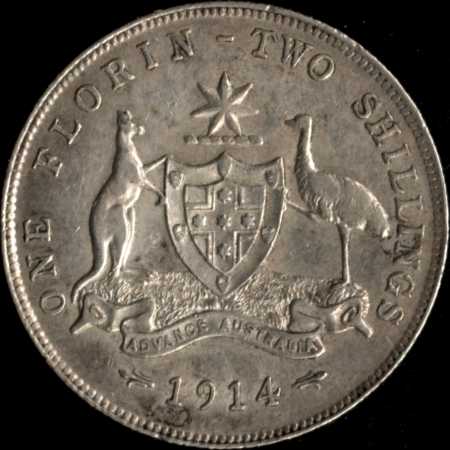
Normal (wide) date.
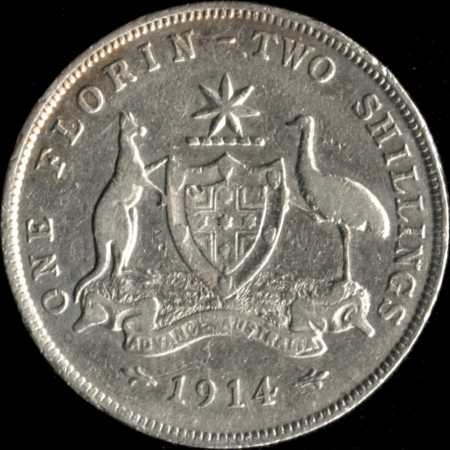
Narrow date. This seems to be a fairly scarce variety.
(Specimen provided by Danny O'Connell.)

Mint mark H below date.
|
|
|
F14L.2A |
F14H.2A | |
|
Mint |
London |
Birmingham |
|
Mint Mark |
None |
H below date |
|
Mintage |
2,300,000 |
500,000 |
Part of the job of minting the 1914 florins was given to Heaton & Sons of
Birmingham and coins from the Heaton mint display an H on the reverse below the
date. The coins struck at the Royal Mint in London occur in two varieties distinguishable
by the spacing and alignment of the numerals in the date.
7th May 2000:
The existence and nature of the London varieties poses an interesting problem.
It is my understanding that it was common practice at the
Royal Mint for the engravers to hand-punch the last one or two digits of the date
directly onto the working dies. Presumably this practice was considered more economical
in the days when mintages were fairly small (less than 5 million coins) than the
alternative approach of preparing a fully dated master die and then pressing a working
punch.
Now since the two varieties of the 1914 London florin have
different spacing between the first two digits of the date, they cannot have
been struck from working dies made from the same 19-- or 191- master tool. Does
this mean that there were two master punches for the early Australian Commonwealth
florins?
 |
F14L.2A.1 Normal (wide) date. |
 |
F14L.2A.2 Narrow date. This seems to be a fairly scarce variety. (Specimen provided by Danny O'Connell.) |
 |
F14H.2A Mint mark H below date. |
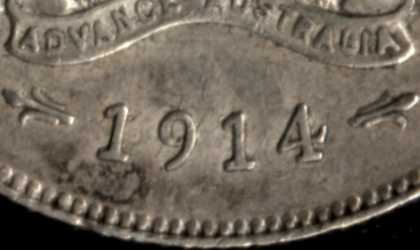 |
F14L.2A.1 Wide date. Second 1 is positioned directly over rim denticle 82. |
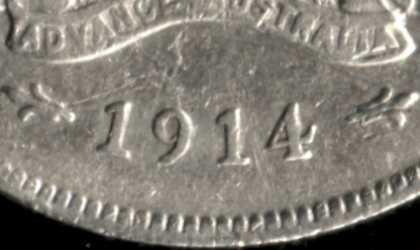 |
F14L.2A.2 Narrower date. The 9 is closer to the first 1, the second 1 is positioned over
the gap between rim denticles 82 and 83 and the 4 is further from the right arrow. |
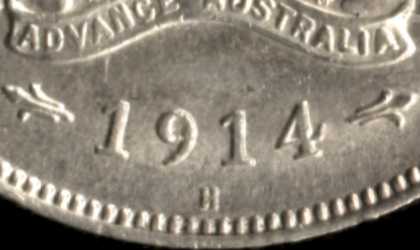 |
F14H.2A Same as the first of the London varieties except for the addition of the mint
mark. |